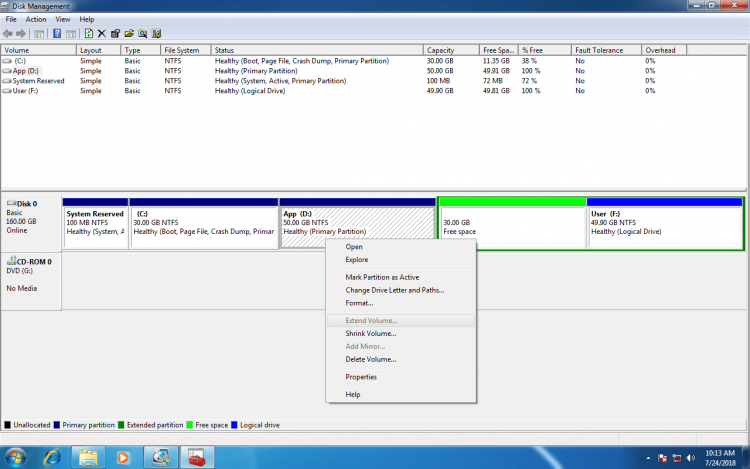Extend Volume Greyed Out


In Windows, you can add more space to existing primary partitions and logical drives by them into adjacent unallocated space on the same disk. To extend a basic volume, it must be raw or formatted with the NTFS file system. You can extend a logical drive within contiguous free space in the extended partition that contains it. If you extend a logical drive beyond the free space available in the extended partition, the extended partition grows to contain the logical drive.For logical drives, boot, or system volumes, you can extend the volume only into contiguous space and only if the can be upgraded to a. For other volumes, you can extend the volume into noncontiguous space, but you will be prompted to convert the to a.This tutorial will show you different ways on how to extend a volume or partition into unallocated space on a basic disk in Windows 10.You must be signed in as an to extend a volume or partition.CONTENTS:. Extend Volume or Partition on Disk in Disk Management. Extend Volume or Partition on Disk in Command Prompt.
Extend Volume Greyed Out Disk Management
Extend Volume or Partition on Disk in PowerShell. Substitute in the command above with the actual drive letter (ex: 'F') you want to resize from above.Substitute in the command above with the actual size (ex: '2' in Bytes) you want to resize the partition/volume (ex: 'F'). You will not be able to resize the partition/volume more than the supported SizeMin (minimum size) and SizeMax (maximum size) given from above.If you wanted to add all of the unallocated space to this partition/volume (ex: 'F'), then you would use the SizeMax (maximum size) for in the command.1000 Bytes = 1 KB1024 KB = 1 MB1024 MB = 1 Gb1024 GB = 1 TBFor example: Resize-Partition -DriveLetter ' F' -Size 25. When finished, you can close the elevated PowerShell if you like.That's it,Shawn.